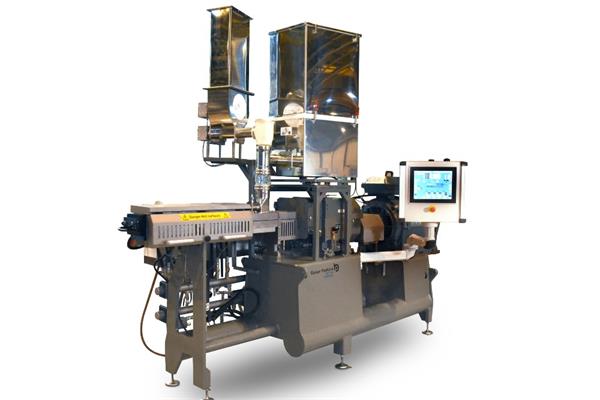
The new twin-screw extruder developed by Baker Perkins increases the output from a smaller machine.
Baker Perkins has recently announced that it has developed HPX45, a new range of high-power twin-screw extruders that delivers superior outputs on powder coating and specialist chemical applications from a smaller barrel, with reduced cost of ownership and machine down time.
Thanks to an 83kW motor through torque stability provided by the patented MAX³ feed system, HPX 45 offers increased power and speed, as well as an increased thrust capacity of the solid-shaft drive train. It provides an average output of 750kg/hour – rising to 1,200 kg/hour on specific applications – and handles a full range of powder coatings and toners, including the most intensive formulations. It is aimed at the small to medium batch market producing 300-800 kg/hr of product, ideally suiting 100kg to 1,500kg batches.
The new extruders range includes all the features of the MPX range:
- Hi-cool barrel that increases efficiency and allows lower melt temperatures;
- Split stuffing box for increased access;
- Pivoting main feeder for easier calibration and emptying;
- Purge feeders for quicker turnaround between batches.
In addition, the water-cooled main drive motors ensure that the noise is reduced at the minimum, while the hi-cool discharge adaptor and the non-stick coating minimise the product hang-up at discharge. HPX 45 is also equipped with a touch-screen HMI that provides clear visualisation of the process and options for systems integration of upstream and downstream equipment into a single control point for the line.
The re-designed MAX³ feed system
The twin-screw extruders are powered by the MAX³ feed system that had been re-designed in the intake feed port and screws to improve the flow of the material into the extruder barrel and the flow of the air out of it, eliminating the material build-up in the extruder infeed that could lead to restricted output and torque surges.
Baker Parkins stated that the system can provide between 40% and 100% of throughput benefits, while the top feeding significantly reduces cost-of-ownership, as it directs the material into the process section of the extruder without pressure, reducing screw wear and preventing heat build-up and no pre-melt.